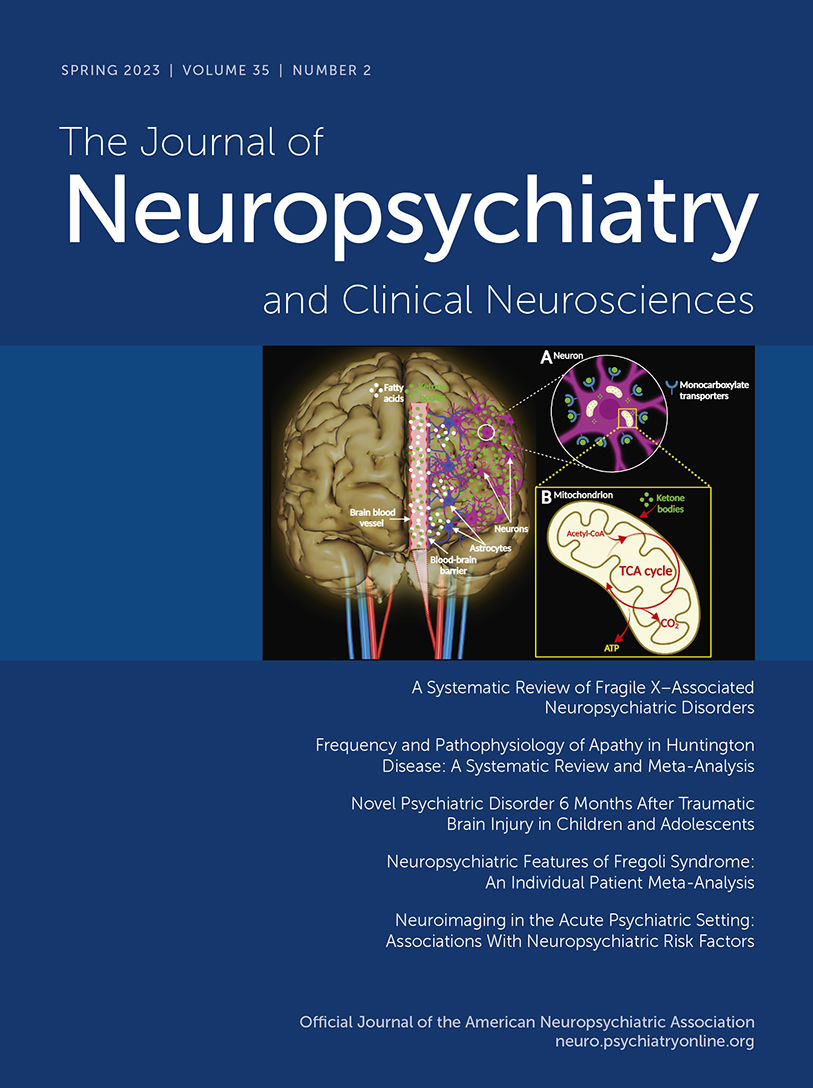Neuropsychiatric Features of Fregoli Syndrome: An Individual Patient Meta-Analysis
Abstract
Objective:
Fregoli syndrome is a rare delusion characterized by the belief that familiar people are presenting themselves disguised as others to the affected person. Theories of delusional misidentification have suggested secondary (“organic”) underlying mechanisms; however, the pathoetiology of Fregoli syndrome has not been systematically evaluated. The investigators aimed to compare the neuropsychiatric features of Fregoli syndrome in primary and secondary psychoses.
Methods:
A systematic review and patient-level meta-analysis were conducted. Five databases were searched, ultimately yielding 83 studies that met selection criteria. Demographic characteristics, diagnosis, delusional content, neuropsychiatric features, investigations, and treatment information were extracted. Random-effects models were calculated, and odds ratios (ORs) and 95% confidence intervals (CIs) were estimated.
Results:
A total of 119 patients with Fregoli syndrome were identified: 62 patients (52%) with primary psychosis, 50 (42%) with secondary psychosis, and seven (6%) with an unclear etiology. Patients with secondary psychosis were less likely than patients with primary psychosis to experience persecutory features (OR=0.26, 95% CI=0.10, 0.67; p=0.0057). Moreover, patients with secondary psychosis were more likely to experience Fregoli syndrome during a first episode of psychosis (OR=11.00, 95% CI=2.45, 49.39; p=0.0017). Right-sided brain lesions were more prominent than left-sided brain lesions in the total sample (χ2=5.0, df=1, p=0.025) and in the secondary psychosis subgroup (χ2=4.26, df=1, p=0.039).
Conclusions:
This is the first meta-analysis to investigate Fregoli syndrome. An estimated 42% of the reported cases involved a secondary etiology. These findings provide clinicians with a better understanding of the symptomatology of Fregoli syndrome and have potential to be applied in future research and clinical practice.



